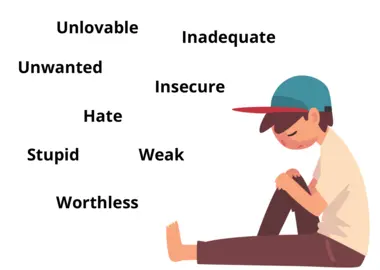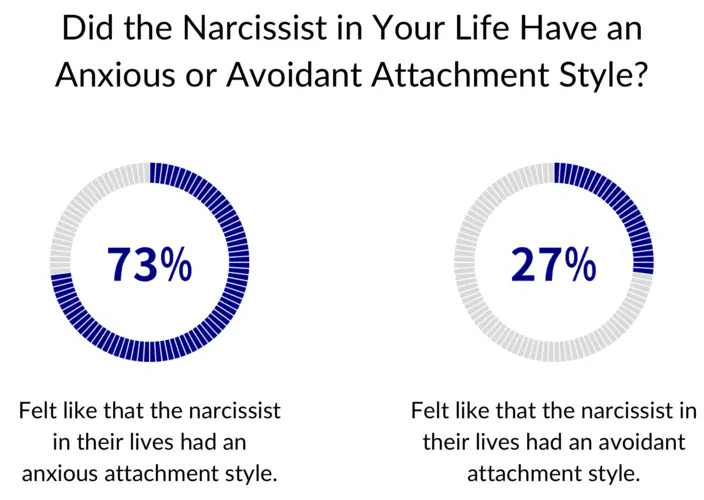Jealousy is an envious resentment of someone or their achievements, possessions, or perceived advantages.1 Since the American Psychiatric Association’s Diagnostic and Statistical Manual of Mental Disorders, Fifth Edition (DSM-5), has associated “envy of others or a belief that others are envious of him or her” with narcissistic personality disorder (NPD)2, it is important to understand the reason that narcissists get so jealous!
Narcissists get jealous because they possess several traits that have been linked to jealousy3 such as low self-esteem, feelings of inadequacy, insecurity, and possessiveness, an unhealthy dependence on the people they form relationships with, anxious attachment styles, and high levels of neuroticism.
This article contains a lot of really helpful information for those trying to understand narcissism and narcissistic abuse! In a short video (see below) we’ve started things off by unpacking the relationship that narcissism and neuroticism have with each other.
A Short Video About the Relationship That Narcissism and Neuroticism Have
Narcissists Have Several Traits That Have Been Linked to Jealousy
The reason that narcissists have so many traits that have been linked to jealousy is believed to be because of their childhood upbringing. There are a lot of different theories about the origin of narcissism, but a majority of them circle around an unhealthy/abusive upbringing with emotionally unavailable, unresponsive, and inconsistent primary caregivers.
Suggested Reading: How Are Narcissists Made?
Low Self-Esteem and Feelings of Inadequacy
Since narcissists had emotionally unavailable, unresponsive, and inconsistent primary caregivers, they never had their thoughts, feelings, emotions, and needs mirrored, which means that they couldn’t get the validation, admiration, and reassurance that one needs to develop a realistic sense of self and have a healthy cognitive development.
This created powerful feelings of inadequacy within the narcissist’s psyche because the emotional neglect that they experienced led them to believe that they were unlovable, unwanted, inadequate, worthless, and weak.
These painful thoughts, feelings, and emotions that narcissists developed caused them to have a deeply rooted hatred for their true identity because they blamed themselves and core parts of their personality for the neglect their emotionally unavailable, unresponsive, and inconsistent primary caregivers were subjecting them to.

As we mentioned before, low self-esteem and feelings of inadequacy are traits that have been associated with jealousy so it is important that you remember why narcissists have them!3
Feelings of Insecurity and Possessiveness
To truly understand the feelings of insecurity and possessiveness that narcissists have, you first must understand the approach narcissists have for emotional regulation.
The painful thoughts, feelings, and emotions that narcissists have about themselves would be extremely difficult for anyone to manage. But the emotional neglect that narcissists experienced led them into an unhealthy cognitive development, so they don’t have the emotional intelligence that is required to manage their painful emotions.
This makes it impossible for narcissists to address their painful emotions with healthy forms of emotional regulation. So to protect their emotional stability, narcissists turned to their external environment to get enough validation, admiration, and reassurance to construct a sense of self and to suppress their chaotic internal world.
Narcissists used their newly constructed sense of self to suppress all of their painful emotions but unfortunately all this did was leave them even more emotionally inadequate, stunted, and immature.
The reason for this is because to get enough validation, admiration, and reassurance to construct a sense of self that could suppress their painful emotions, they had to create a falsified identity that could be accepted by others. Again, this is because they believe that their true identity is worthless, weak, unlovable, unwanted, and inadequate.

To do this narcissists use a manipulative technique called mirroring that occurs when they absorb a ton of information about another person or group of people and use that information to create a falsified identity that is designed to portray themselves as “perfect” to whoever they are trying to hide their true identity from.
Suggested Reading: How Do Narcissists Use Mirroring
Unfortunately, they are so emotionally inadequate, stunted, and immature that they couldn’t look past society’s superficial exterior when constructing a falsified identity so they end up building it out of the most superficial, trivial, and materialistic aspects of life.
This means that the validation, admiration, and reassurance that they get for their sense of self is just as superficial, trivial, and materialistic. So while they present themselves as charming, successful, innocent, honest, desirable, goodhearted, charismatic, and virtuous through their falsified identity, they lack depth and are extremely fragile.
Their one-dimensional and emotionally fragile sense of self causes them to develop powerful feelings of insecurity and possessiveness. Insecurity is “a lack of confidence about yourself or your relationships with other people”4 and possessiveness is, “the fact of demanding total attention or love and not wanting somebody to be independent.“5
Narcissists are insecure because of the emotionally inadequate, stunted, and immature approach they had when constructing a sense of self. They feel like nothing without the validation, admiration, and reassurance. They are possessive because they have a very transactional view of the relationships they form and the world in general.
We will speak a lot more about narcissistic supply in the next section but it is important to know that narcissists only go after things that give them narcissistic supply, also known as validation, admiration, and reassurance.
Their emotional stability is heavily dependent on narcissistic supply so they are quite possessive over the living and nonliving things that give them validation, admiration, and reassurance.

A Dependence on the People That They Form a Relationship With
The emotionally inadequate, stunted, and immature approach that narcissists have for emotional regulation only “works” if they have a consistent flow of narcissistic supply, also known as validation, admiration, and reassurance, from their external environment. (e.g. getting praise for doing a good job at work or being really popular in their school)
If narcissists don’t get enough narcissistic supply, their suppressed painful emotions get triggered and compromises their emotional stability. It is for this reason that narcissists wake up every single day and search for narcissistic supply. It allows them to protect their charming, successful, innocent, honest, desirable, goodhearted, charismatic, and virtuous self-perception.
We spoke about this a lot in our article What Do Narcissists Use You For but narcissists use the people that they form relationships with for narcissistic supply and as a repository for their suppressed painful emotions.
They don’t care about your well-being, they only care about getting their own selfish needs met. The moment a narcissist feels like maintaining a relationship with someone isn’t beneficial for them, they will discard them for someone else.
While this may seem like a very powerful and controlling position for a narcissist to be in, it is not. The moment that the person they have a relationship with is able to acknowledge that what they are experiencing is abuse, they’ll be able to cut off all of the narcissistic supply that the narcissist needs by leaving the relationship, which will trigger all of the narcissist’s suppressed painful emotions.
While narcissists are very good at pretending they are a dominant force of nature, they are heavily dependent on the people that they have a relationship with and this plays a massive role in the overwhelming amounts of jealousy that narcissists have (e.g. a narcissist refuses to allow his/her spouse to hang out with his/her friends because the narcissist gets jealous when the spouse has fun with others).

Anxious Attachment Styles
In the 1950’s John Bowlby, a psychiatrist, and Mary Ainsworth, a psychologist, introduced the Attachment Theory6 which focuses on the relationships that infants form with their primary caregivers.
In their theory, they define a healthy primary caregiver as someone who is emotionally available, responsive, and consistent. As we mentioned before, it is believed that the primary caregivers of narcissists were not emotionally available, responsive, and consistent.
The attachment styles that were outlined in the Attachment Theory were secure, anxious, and avoidant. Just for clarification, the term “attachment style” is used to describe our physical and/or emotional response for others.
In the Attachment Theory, these three attachment styles (swipe below to read the definitions of them) were highlighted when they specifically focused on responses of the infants when they were separated with their primary caregiver.
An infant who experienced emotionally available, responsive, and consistent primary caregivers is much more likely to develop a secure attachment style than infants who don’t.
The work of John Bowlby and Mary Ainsworth in the Attachment Theory is fascinating and highlights some similarities between narcissism and anxious/avoidant attachment styles but the connection was made even stronger when Cindy Hazan, PhD suggested the attachment styles that the Attachment Theory lays out also apply in adult relationships.7 8
Hazan has described anxiously attached adults as people who are constantly worrying if people love them or not, and become very frustrated when their needs aren’t met. This description is the reason that Hazan’s work has connected narcissism and anxious attachment styles with each other.
This is interesting because narcissists have a crippling fear of abandonment/rejection that seems to align with an anxiously attached adult constantly worrying about whether or not people love them, and a narcissist’s tendency to explode into a narcissistic rage when their needs aren’t met is the equivalent to an anxiously attached adult becoming frustrated when their needs aren’t met.
If this theory that narcissists have anxious attachment styles is true, then it would mean that they get very upset when they are separated with someone that they depend on for narcissistic supply, and unappeasable upon their return. Almost as if they are still angry at their unavailable, unresponsive, and inconsistent primary caregiver from their childhood, and are projecting their anger onto their partners in adulthood.
Suggested Reading: Why Do Narcissists Use Projection
We had to put this theory to the test so we conducted a survey among 200 survivors of narcissistic abuse. In this survey we defined the attachment styles as we did in the images up above and asked them if they recognize any of the attachment styles from their own experiences with the narcissist in their life and this is what we found:

What Should You Take Away From This Article?
It is important to note that while a narcissist’s upbringing is sad, it is not an excuse for their abusive behavior. It shouldn’t be used to justify, rationalize, or normalize their abuse. With that being said, the emotional neglect that narcissists are believed to have experienced during their childhood upbringing has caused them to develop several of the traits associated with jealousy, which explains why narcissists can get so jealous!
About the Author

Hey, I’m Elijah.
I experienced narcissistic abuse for three years.
I create these articles to help you understand and validate your experiences.
Thank you for reading, and remember, healing is possible even when it feels impossible.
References:
[1] Definition of Jealousy
[3] What’s Really Behind Jealousy, and What to Do About It
[4] Definition of Insecurity
[5] Definition of Possessiveness
[6] Bretherton, Inge. “The origins of attachment theory: John Bowlby and Mary Ainsworth.” Developmental psychology 28.5 (1992): 759.
[7] Hazan, Cindy, and Phillip Shaver. “Romantic love conceptualized as an attachment process.” Interpersonal Development. Routledge, 2017. 283-296.
[8] Hazan, Cindy, and Philip R. Shaver. “Deeper into attachment theory.” Psychological Inquiry 5.1 (1994): 68-79.



